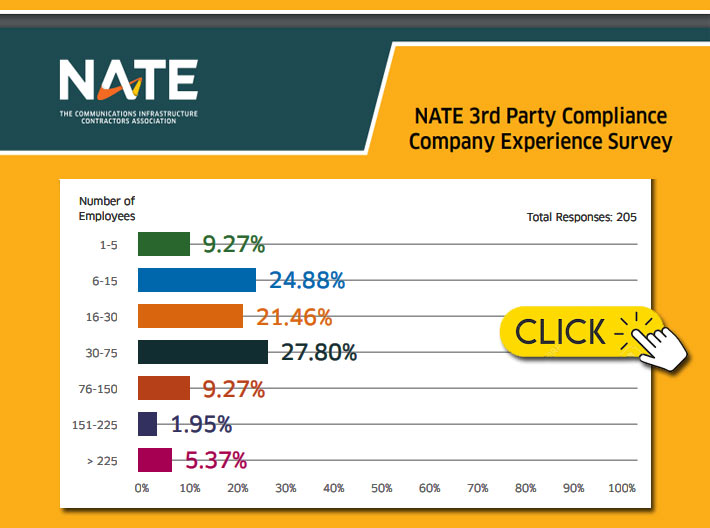
The 3rd party compliance survey presented some interesting results in addition to providing the average number of employees of responding companies and their number of years in business
NATE: The Communications Infrastructure Contractors Association today unveiled the results of the Association’s 3rd Party Compliance Company Experience Survey.
NATE conducted the survey in May of 2020 in order to assist the Association in identifying many of the onboarding “pain points” and assess the impact these practices have on member contractor firms. Over the course of the month, 205 NATE member companies completed the survey.
The survey provided interesting data such as the 92% of all respondents were required to use Avetta and 81% were using BROWZ’s services. ABIS, a new competitor to Avetta, had 12% and ISNetworld was being used by 20% of the respondents.
Once Avetta integrates BROWZ which they acquired last year, the percentage of contractors that would be required to use Avetta for onboarding and compliance could easily reach 94% since 6% of NATE’s contractor members who took the survey said that they did not use any vendor compliance companies.
A key concern was the time that it takes 3rd party compliance companies to resolve an issue that arises. Almost 60% said it was in one week and 20% said that they had to wait a full week.
Cost was a issue of 84% of the respondents in addition to the amount of time and expense that was required to be onboarded and annual renewal requirements.
Seventy four percent of contractors were in favor of wireless customers standardizing the baseline onboarding requirements, safety manual, training requirements, certifications and other requirements.
“The survey results and accompanying comments highlight and validate many of the issues I hear directly from our member companies when it comes to navigating the 3rd party compliance company onboarding process,” said NATE President & CEO Todd Schlekeway.
More than 60% of the respondent companies have been in business for over 15 years.
“I am pleased to report that the Association’s Compliance Committee conducted a meeting earlier this week with key carrier and tower owner stakeholders to listen to each other’s perspectives and begin the process of identifying potential solutions to these challenges,” added Schlekeway.
















